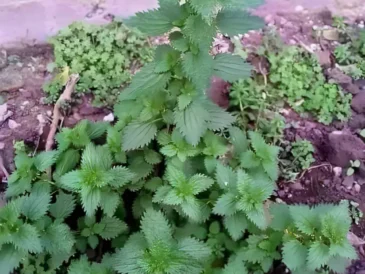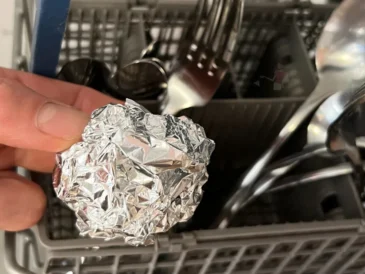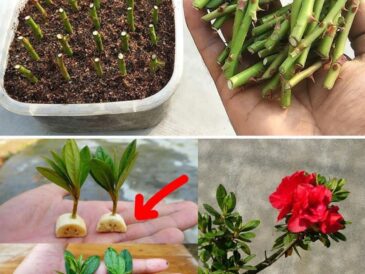In today’s world, where urban living and limited outdoor space are common, container gardening has emerged as an innovative and accessible way to grow your own fresh produce. Whether you live in an apartment, have a small balcony, or just want to maximize your garden space, growing crops in buckets offers a flexible, sustainable, and rewarding gardening solution. Buckets are affordable, portable, and easy to manage, making them perfect containers for a variety of vegetables.
If you’re eager to cultivate your own food but are short on space, this guide will introduce you to 9 crops that thrive in buckets all year round. From juicy tomatoes to nutrient-packed spinach, these plants will bring a continuous harvest with the right care and environment. Let’s dive into each crop, discussing how to plant, care for, and harvest them successfully in buckets.
Why Choose Bucket Gardening?
Before we explore the crops, it’s worth understanding why bucket gardening is such a powerful technique:
- Space Efficiency: Buckets are compact and can fit on balconies, patios, rooftops, or indoors near sunny windows.
- Soil Control: Growing in buckets lets you control soil quality, moisture, and nutrients more precisely.
- Mobility: You can move your plants to follow the sun or protect them from harsh weather.
- Pest and Disease Management: Container gardens are often easier to protect from pests and diseases.
- Year-Round Growth: With proper setup and crop selection, you can grow fresh vegetables throughout all seasons.
With these advantages, growing vegetables in buckets isn’t just a hobby — it’s a pathway to sustainable living and better nutrition.
What You’ll Need for Successful Bucket Gardening
To get started, here’s a quick checklist of materials:
- Buckets: Food-grade, 5-gallon buckets are ideal. Avoid buckets that previously contained toxic substances.
- Potting Mix: Use a high-quality, well-draining potting soil rich in organic matter.
- Drainage: Drill holes in the bottom of the buckets to prevent waterlogging.
- Fertilizer: Organic or slow-release fertilizers to nourish your crops.
- Watering Tools: A watering can or hose with a gentle spray.
- Support Structures: Stakes, cages, or trellises for climbing or tall plants.
- Sunlight: Ensure at least 6-8 hours of direct sunlight for most vegetables.
- Temperature Control: For colder months, consider insulating your buckets or moving them indoors.
Now that you have the basics, let’s explore each crop in detail.
1. Tomatoes: The Classic Container Gardening Superstar
Tomatoes are the quintessential crop for bucket gardening, loved for their vibrant flavor and versatility in the kitchen.
Why Tomatoes Thrive in Buckets
Tomatoes have a deep root system and benefit from the controlled environment of buckets. A 5-gallon bucket provides enough space for roots to grow and soil to retain moisture without becoming waterlogged.
How to Grow Tomatoes in Buckets
- Choose the Right Variety: Determinate (bushy) varieties are compact, while indeterminate (vining) tomatoes benefit from staking or cages.
- Planting: Use quality seedling starts or grow from seeds indoors before transplanting. Fill the bucket with nutrient-rich potting soil.
- Support: Insert a sturdy tomato cage or stake at planting time to avoid damaging roots later.
- Watering: Keep soil consistently moist but not soggy. Tomatoes dislike drying out completely.
- Feeding: Apply balanced fertilizer every 2-3 weeks. Use organic compost or a tomato-specific fertilizer high in potassium for fruit development.
- Harvesting: Pick tomatoes when fully colored and slightly soft to the touch. Frequent harvesting encourages more fruit.
Tips for Year-Round Growing
In cooler months, move buckets indoors or use grow lights. Choose cold-tolerant tomato varieties or grow cherry tomatoes which can handle cooler temperatures better.
2. Onions: Versatile and Easy to Grow in Buckets
Onions are a staple in kitchens worldwide and surprisingly adaptable to container culture.
Types of Onions for Buckets
- Green Onions (Scallions): Fast-growing and perfect for small spaces.
- Bulb Onions: Require deeper soil to form large bulbs.
- Red Onions: Add color and nutrition to your harvest.
Planting Onions in Buckets
- Soil: Well-draining soil is critical to prevent rot.
- Sunlight: Onions need at least 6 hours of full sun daily.
- Spacing: Plant sets or seedlings 1-2 inches apart.
- Watering: Keep soil moist but avoid overwatering.
- Fertilizer: High nitrogen levels support leaf growth; switch to balanced feed as bulbs develop.
Harvesting Onions
Green onions can be snipped anytime. Bulb onions are ready when tops start to yellow and fall over. Cure them by drying in a warm, airy spot before storing.
3. Potatoes: Growing Spuds in Buckets is Totally Possible!
Potatoes are often overlooked for container gardening but thrive remarkably well in buckets.
Growing Potatoes in Buckets
- Starting Material: Use certified seed potatoes, cut into chunks with at least one eye each.
- Soil Filling: Start with 4-6 inches of soil in the bucket. Plant potatoes and then cover with soil as plants grow (“hilling”).
- Drainage: Ensure your bucket has ample drainage holes to prevent waterlogging.
- Sunlight: Potatoes love full sun (6-8 hours daily).
- Watering: Consistent watering is key, especially during tuber formation.
Harvest Tips
When the plants flower and foliage yellows, you can start harvesting. Gently dig through the soil or tip the bucket over to collect your potato crop.
4. Kale: The Supergreen that Keeps Giving
Kale is a nutritional powerhouse loaded with vitamins A, C, and K, and perfect for year-round container gardening.
Why Kale Loves Buckets
Kale thrives in cooler weather and tolerates light frost, making it ideal for fall, winter, and spring growing. It has a compact root system perfect for pots.
Growing Tips
- Planting: Sow seeds directly or transplant seedlings.
- Watering: Keep soil moist but not waterlogged.
- Sunlight: Partial to full sun works well.
- Harvesting: Pick outer leaves first; the plant keeps producing new leaves.
Varieties to Try
Click page 2 for more





